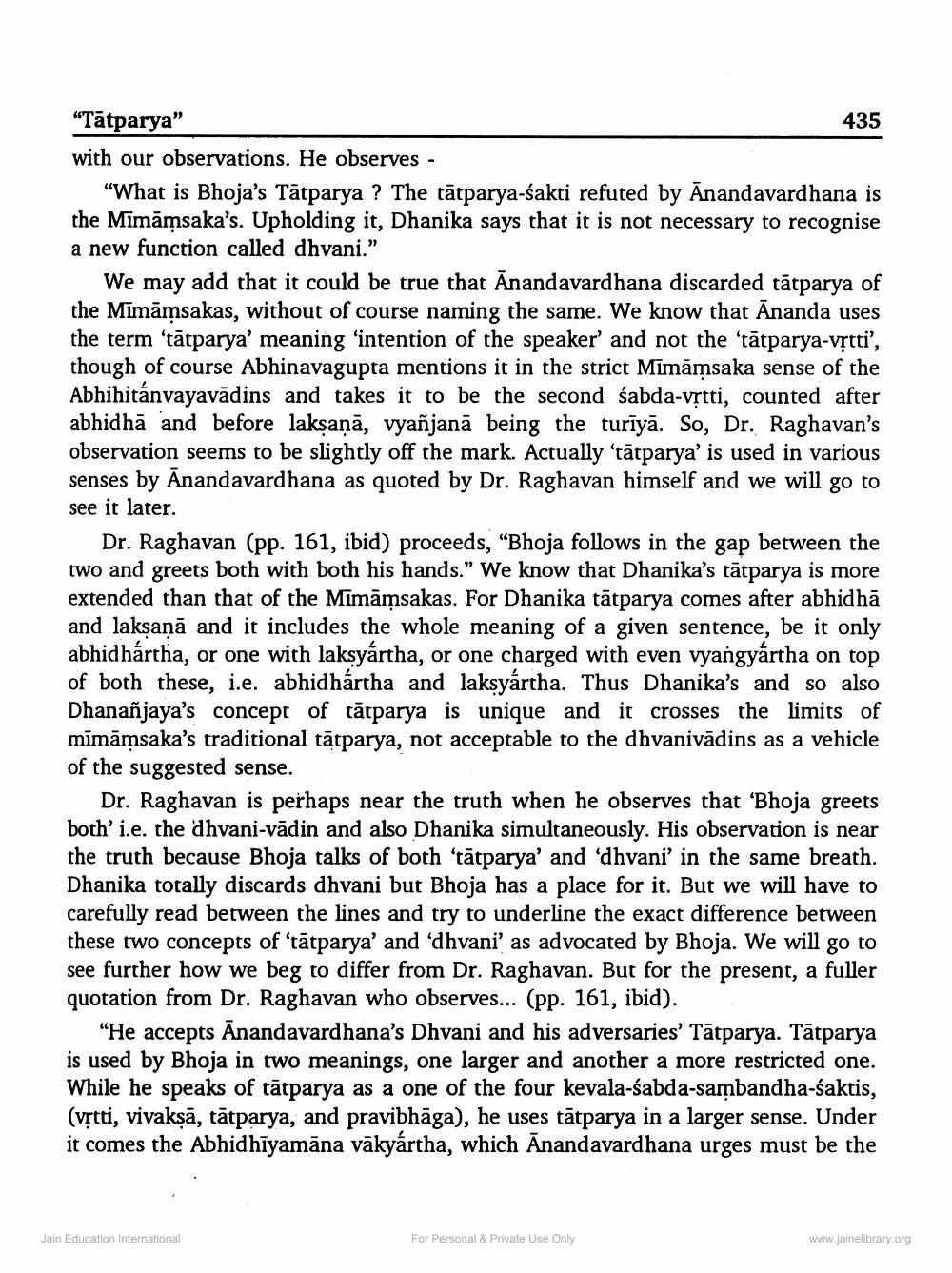________________
"Tātparya"
435 with our observations. He observes -
"What is Bhoja's Tātparya ? The tātparya-sakti refuted by Anandavardhana is the Mimāmsaka's. Upholding it, Dhanika says that it is not necessary to recognise a new function called dhvani."
We may add that it could be true that Anandavardhana discarded tātparya of the Mimāmsakas, without of course naming the same. We know that Ananda uses the term 'tātparya' meaning 'intention of the speaker and not the 'tātparya-vrtti', though of course Abhinavagupta mentions it in the strict Mimāmsaka sense of the Abhihitánvayavādins and takes it to be the second sabda-vrtti, counted after abhidhā and before lakṣaṇā, vyañjanā being the turīyā. So, Dr. Raghavan's observation seems to be slightly off the mark. Actually 'tātparya' is used in various senses by Anandavardhana as quoted by Dr. Raghavan himself and we will go to see it later.
Dr. Raghavan (pp. 161, ibid) proceeds, “Bhoja follows in the gap between the two and greets both with both his hands." We know that Dhanika's tātparya is more extended than that of the Mimāmsakas. For Dhanika tātparya comes after abhidhā and laksaņā and it includes the whole meaning of a given sentence, be it only abhidhártha, or one with laksyártha, or one charged with even vyangyártha on top of both these, i.e. abhidhártha and laksyártha. Thus Dhanika's and so also Dhananjaya's concept of tātparya is unique and it crosses the limits of mīmāmsaka's traditional tātparya, not acceptable to the dhvanivadins as a vehicle of the suggested sense.
Dr. Raghavan is perhaps near the truth when he observes that 'Bhoja greets both' i.e. the dhvani-vādin and also Dhanika simultaneously. His observation is near the truth because Bhoja talks of both 'tātparya' and 'dhvani' in the same breath. Dhanika totally discards dhvani but Bhoja has a place for it. But we will have to carefully read between the lines and try to underline the exact difference between these two concepts of 'tātparya' and 'dhvani' as advocated by Bhoja. We will go to see further how we beg to differ from Dr. Raghavan. But for the present, a fuller quotation from Dr. Raghavan who observes... (pp. 161, ibid).
"He accepts Ānandavardhana's Dhvani and his adversaries' Tātparya. Tātparya is used by Bhoja in two meanings, one larger and another a more restricted one. While he speaks of tātparya as a one of the four kevala-sabda-sambandha-śaktis, (vrtti, vivaksā, tātparya, and pravibhāga), he uses tātparya in a larger sense. Under it comes the Abhidhīyamāna vākyártha, which Ānandavardhana urges must be the
Jain Education International
For Personal & Private Use Only
www.jainelibrary.org




